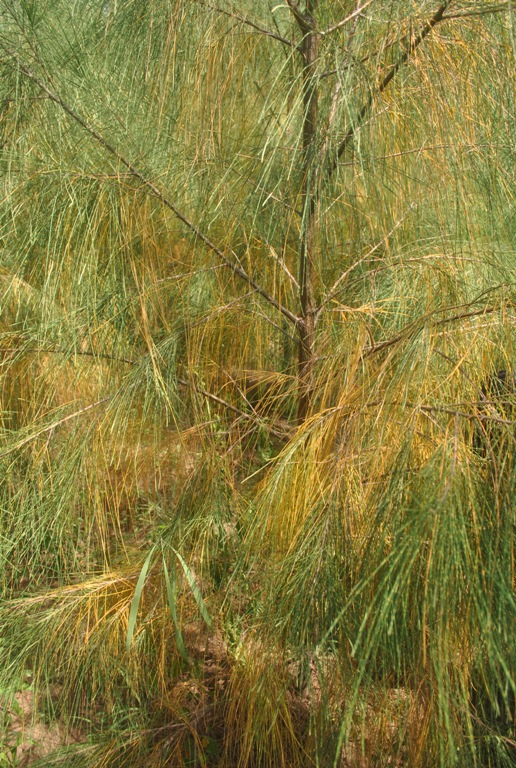Wilt is a systemic disease in which the foliage of the whole plant or its part may wilt in acropetal succession up the shoot.
1. Moderately high temperature.
2. Acidic soil condition with high nitrogen and low potassium content.
3. Occurrence of nematodes.
4. A dynamic influence is exerted by the soil microflora, particularly in the rhizosphere of the host, on root infecting pathogens.
Many forestry species such as Casuarinas, Teak, etc are affected by this disease.
Fungal species such as Verticillium and Fusarium and bacteria like Pseudomonsa solanacearum cause wilt disease on important tree species in young plantations and they impair water conductivity of the conducting tissue.
The affected plant shows the following symptoms.
a) Yellowing of leaves. Leaves loose turgidity and fall off.
b) The affected branch or whole plant may die. Occurring of dwarfing, stunting and necrosis.
c) Discoloration in outer layer of the sapwood.
Detection
Continuous surveillance is essential to detect any dying trees.
Destruction
Infected trees should be watered frequently to decrease wilt symptoms, and dead branches should be removed and burned. Remove highly affected trees and immediately burn or bury the wood. The point is to prevent it from serving as breeding material for the beetles. If there is no vector, there is no disease.
Tree resistance
Planting of resistant trees.
Bacterial wilt disease on Casuarina




